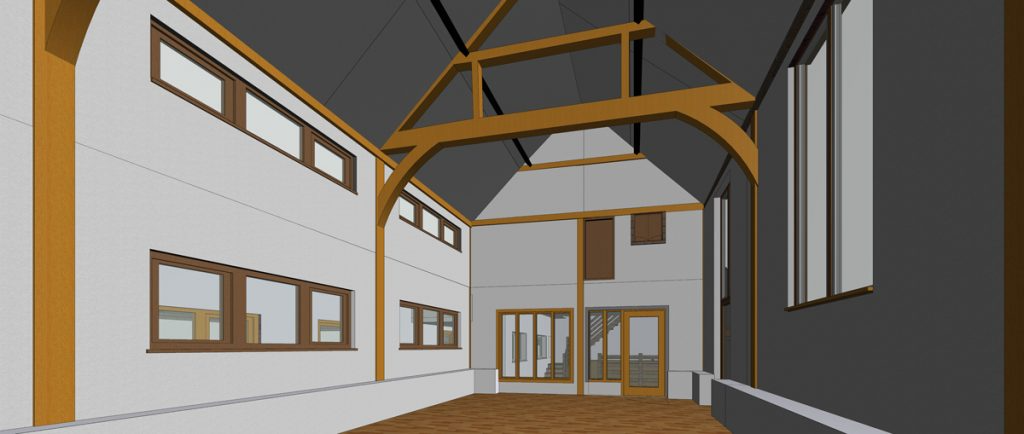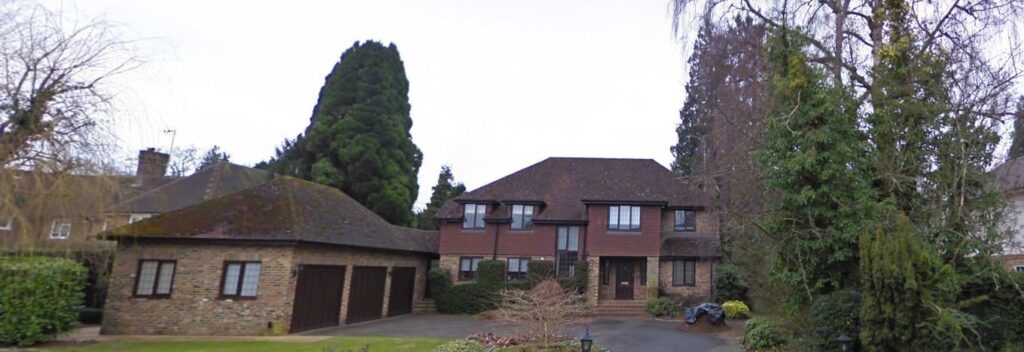Misplacing your home’s original floor plans isn’t the end of the world — not by a long shot. Whether you’re planning a renovation, need proof of lawful construction, or just want to know what’s behind that odd partition wall in the hallway, you’ve got options.
Here’s a step-by-step playbook for UK homeowners to track down (or recreate) missing building plans — quickly, legally, and without the stress.
Step 1: Start with the Local Council
Why?
Because local councils keep planning and building records on file — and they’re your best shot at finding any formally submitted plans.
Here’s what to do:
Check the Planning Portal
All planning applications in England and Wales — including floor plans — are public record. Go to your local council’s planning portal or use the national planning register. You can search by address or postcode.
Some councils go back 20+ years online. If the documents aren’t digitised, give their archive team a ring — you may need to request a physical copy or visit in person.
Contact Building Control
Planning approval is one side of the coin — building control is the other. If the council handled the inspection, they’ll have full plans and completion certificates. If the job was done via a private Approved Inspector, contact that firm instead.
You’ll need to prove ownership and pay a small admin fee. But it’s usually quick and worth it.
Pro tip:
If the work was carried out without permission, don’t panic. You can still apply for retrospective approval (aka “regularisation”) or get indemnity insurance to cover it.
Step 2: Check Ownership and Legal Documents
Think of this as a paper trail audit.
Your Title Deeds
Old deeds and sale documents often include a basic plan — especially for new builds or leaseholds. Your solicitor or mortgage broker may still have these on file. Ask.
HM Land Registry
You can buy a Title Register and Title Plan online for a small fee. While they won’t show you room layouts, they’ll confirm your legal boundaries and plot size — helpful if you’re reconstructing floor layouts.
Just don’t expect internal detail. These plans are for land, not layouts.
Step 3: Tap the Usual Suspects (Builders, Sellers, Agents)
If your home isn’t centuries old, someone nearby probably has what you’re after.
Ask the Previous Owner
If you’re in touch, ask them directly. They may have held onto floorplans, planning notices, or even sketches from that dodgy 90s conservatory project.
Speak to the Developer or Architect
Was your house built as part of a development? The original builder or architect may still have full plans on file. They’re often happy to provide copies — especially if they’re still in business.
Estate Agents and Property Portals
Agents typically create marketing floorplans when a property goes on the market. Search your address on Zoopla or Rightmove. Google works too — try:
“YourPostcode floorplan Zoopla”.
Some agents also store archives internally. If you know who handled your purchase, give them a call.
Tip: The types of plans needed to sell a property will not likely be good enough for any construction project. While they will show a basic floor plan, it may lack detail and will likely not include elevations, sections etc. However these floor plans can be reused if selling the property again.
Step 4: Turn to the Archives (For Older Properties)
If your home has a bit of history — think pre-1960s — your best bet might be local or national archives.
The National Archives
Based in Kew, they’ve got an impressive collection of architectural drawings, including historic blueprints and property plans. You can search their catalogue online or visit in person.
County Record Offices & City Libraries
Local archives often hold council housing plans, old borough surveys, and records of post-war developments. If your house was ever under council ownership or part of a conservation area, there’s a good chance plans exist here.
Heritage & Preservation Societies
If your home is listed, or in a conservation area, these groups may have their own set of maps or planning documentation — or know where to find them.
Step 5: DIY It with Apps and Tools
Can’t find your plans anywhere? Time to take matters into your own hands.
Use Your Phone
Apps like MagicPlan, RoomScan, and RoomSketcher let you map out floor layouts just by walking around with your smartphone. Apple users with LIDAR-enabled devices (newer iPhones and iPads) get even more accurate scans.
These aren’t perfect, but they’re ideal for getting a working draft that can be used for space-planning or selling your property. Do not rely on these apps for construction projects since any error can have huge costs and time implications.
Ordnance Survey Maps
You can get a good sense of plot boundaries and extensions from OS maps — just bear in mind they won’t show internal features.
Step 6: Hire a Pro for Accuracy
If you’re applying for planning permission, selling, or making structural changes — you’ll need proper, scaled plans that are accurate to the millimeter.
Measured Building Surveys
A chartered surveyor can carry out a Measured Building Survey using laser tools and specialist gear. You’ll get detailed floorplans, elevations, and even 3D models if needed.
These surveys cost more that DIY and price varies depending on property size — but you’ll get highly accurate drawings you can reliably start designing or construction with.
Recommended Firms
Look for RICS-accredited surveyors such as Terrain Surveys. We all offer national coverage and industry-standard plans.
Don’t Skip the Legal Bits
This part is often overlooked — but it can come back to bite you. If your plans are missing, there’s a chance certain works on the house were never approved. That can cause all sorts of headaches later on.
Retrospective Planning Permission
If you uncover that an extension, loft conversion, or conservatory was built without consent, you can apply for regularisation. This is the official way to get building regs approval after the fact — usually within 10–15 years of the work being done.
Check with your local council. They’ll need drawings and possibly a site visit.
Indemnity Insurance
Selling your house without the right certificates? Solicitors often recommend indemnity insurance. It’s a quick workaround that protects future owners (and you) from enforcement action.
Verify Before You Act
Found a floorplan online or got one from a neighbour? Great — but don’t treat it as gospel. Before submitting it for planning, construction or compliance, get a professional to confirm its accuracy. It’s far cheaper than correcting mistakes mid-project.
Your Action Plan Recap
Here’s the condensed version of what to do when your original building or floor plans have vanished:
Check Official Records
- Search the planning register or your council’s portal.
- Contact Building Control (or Approved Inspector).
Review Property Documents
- Scan title deeds and solicitor files.
- Order your Title Plan and Title Register from HM Land Registry.
Ask Around
- Contact the previous owner, developer, or estate agent.
- Check with neighbours — identical layouts are common on estates.
Search Online
- Use Zoopla, Rightmove or Google to find archived floorplans.
Use Technology
- Use mobile apps to sketch your own plan (if plans are needed for non-construction purposes)
Hire a Professional
- Commission a Measured Building Survey if accuracy is key.
Sort Permissions
- If unauthorised work exists, apply for retrospective approval or indemnity insurance before selling or remodelling. For this, you’ll need full drawings of the unauthorised construction.
Why a Measured Building Survey is the Smart Choice (Especially in the UK)
When it comes to building plans, precision isn’t optional — it’s essential. Whether you’re submitting to planning, restructuring internal layouts, or need a compliant record for legal purposes, here’s the reality:
DIY floor plans? Just won’t cut it.
Let’s break down the options — and explain why a Measured Building Survey is in a league of its own.
How the Options Compare
| Option | Method | Accuracy | Cost | Best For |
| DIY Floor Plan Apps | Phone scanning, manually drawing | Low | Low | Personal reference, rough layouts, interior design, property sales |
| Architect/Draftsman | Manual drawings & CAD | High | High | Construction projects |
| Measured Building Survey | Laser-accurate tools, pointcloud, Revit | Very High | Medium | Construction projects |
See the difference?
If you need exact plans — for mortgage applications, permitted development, or large-scale refurbishments — don’t leave it to chance.
What Makes a Measured Building Survey So Reliable?
- Laser Precision
We use laser scanners and digital tools that capture the structure in 3D down to the millimetre. It’s not just accurate — it’s court-ready. - CAD or BIM-Ready Output
You get plans you can actually use — whether that’s CAD drawings for your architect or BIM models for your contractor. No drawling conversions. No delays. - Ideal for Compliance
Need to meet building regulations, sell your property, or prove lawful development? Our surveys meet the required standards. Full stop. - Quick Turnarounds
Most surveys are wrapped up in a day, with drawings delivered just days later — perfect if time’s tight.
Why Not Rely on Your Original Floor Plans?
Simple. They might be:
- Outdated
- Incomplete
- Or missing altogether
Especially with older buildings, chances are what’s on paper doesn’t match what’s actually on site. This can happen if the construction varied from the original drawings due to less strict building control measures in the past, or in the case of very old buildings walls might move over time or roofs might sag – causing a mismatch. And that’s a headache waiting to happen if you’re planning major works.
Solution? Commission a fresh, professional building survey — so you know you’re working with now.
Who Needs a Measured Building Survey?
This isn’t just for architects. Here’s who we regularly work with:
- Homeowners planning extensions or loft conversions
- Property developers needing full-site documentation
- Estate agents creating accurate marketing materials
- Solicitors needing compliant plans for lease, sale or disputes
- Local authorities demanding up-to-date plans for planning consent
Bottom line: if it needs to be right, it needs to be measured.
Get Accurate House Plans Today
Lost your original building plans?
We’ve got you.
At Terrain Surveys, we specialise in accurate, laser-measured building surveys tailored to your exact property — no matter the size or shape.
You’ll get:
- Fully annotated floor plans
- Elevations and sections if needed
- Digital files ready for planning, building or CAD work
Contact us now for a free, no-obligation quote.
Contact Terrain Surveys to get started.



